One of the most valuable tools you can include in your toolbox is a saw. Whether for gardening or construction, such intricate working equipment is essential to properly completing the operations at hand.
Therefore, the types of saws you choose for your specific task need to be the right ones. Otherwise, you could have a really tough time finishing your job and, eventually, may get yourself in trouble.
However, for your convenience, we will discuss the many types of saws and their uses in this blog post. Here's everything you need to know.
More...
Different Types of Saws
1. Mitre Saws

Mitre saws are one of the most versatile among the types of electric saws a woodworker or handyperson can have in their arsenal. In addition to cutting baseboards and molding, they can also be used to cross-cut lumber precisely.
However, choosing the appropriate type of mitre saw for a particular task can often be confusing. Many people have the misconception that brand differences are the only differentiating factor when it comes to saws. But that's not truly the case.
Mitre saws come in two primary varieties: sliding mitre saws and non-sliding mitre saws. These variations are what distinguish mitre saws for use on a variety of different tasks. For instance, if you need a mitre saw to operate for a longer period, such as in workshops, we strongly advise using a sliding saw which is installed on a reliable mitre saw stand.
Unlike a non-sliding mitre saw, these saws are well-suited for a large work capacity and can ensure a seamless performance while cutting the hardest wood or material in your backyard.
So, if you choose an electric bench type of power saw, get a sliding mitre power saw that would provide the best service and longer durability.
2. Table Saws

A table saw is a powerful woodworking tool that consists of a blade that is circular in shape and mounted on an arbor that protrudes through a slot in a table. An electric motor drives the blade, and the table is usually adjustable to allow the user to make precise cuts.
The most common type of table saw is the contractor saw, designed for general woodworking. These saws are usually portable and have a wide variety of features.
The next type of table saw is the cabinet saw, a heavier and more powerful version of the contractor saw. Cabinet saws are designed for more demanding woodworking projects and usually have a stationary base.
The last type of table saw is the hybrid saw, a cross between the contractor and cabinet table saws. These saws are the most expensive and heaviest type with a large footprint and are typically used by professional woodworkers.
Find out more about table saws and what to look for when buying one with the help of our comprehensive table saw buying guide.3. Concrete Saws
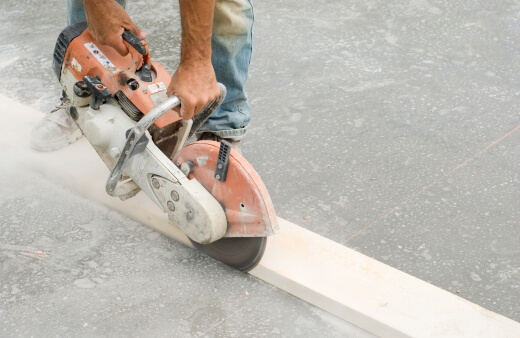
Whether you are a professional contractor or a DIYer, a concrete saw can save you lots of time and money on your next project. These types of saws are typically used to cut through concrete, masonry, brick, and asphalt.
And there is a concrete saw designated for each particular cutting task. For instance,


Get Your Free Guide:
Master Growing Australian Natives eBook
A Must Have Complete Guide for Every Australian Garden
Get Your Free Guide:
Master Growing Australian Natives eBook
A Must Have Complete Guide for Every Australian Garden
- Diamond Blade Concrete Saws: These saws use a diamond-tipped blade to cut through concrete. They work incredibly well for creating tidy, accurate cuts.
- Masonry Saws: These saws are designed for cutting bricks, blocks, and stones.
- Walk-Behind Saws: These saws are designed to cut large concrete pieces. Contractors often use them to cut sidewalks, driveways, and parking lots.
So, no matter the type of concrete cutting task you may have in your hand, such as removing concrete slabs, laying blocks for wall or foundation work, or cutting asphalt for pavement repair, it is wise to select a specialized concrete saw for your work to be completed more effectively.
Learn more about this type of saw by reading our Australian buying guide for concrete saws in 2023.
4. Circular Saws
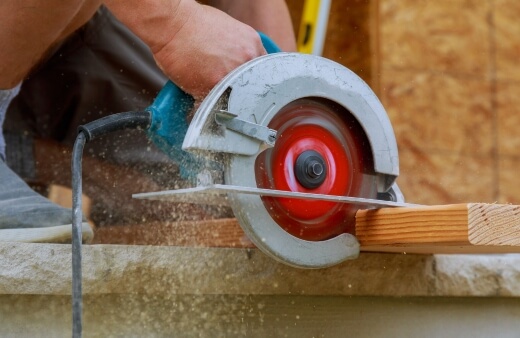
A circular saw is a powerful tool with a round blade that spins quickly and is held in place by a clamp. The blade is usually about 4.5 to 7.5 inches in diameter and is made up of carbide edges to stay sharp longer.
These saws can be relatively easy to use. So, even if you are a newbie, you can handle them quickly. Here are some of the most common uses for a circular saw:
- This handheld tool can easily make quick, clean cuts through lumber, plywood, particle board, and laminate.
- They are also helpful in cutting dadoes and tenons.
- When cutting through thicker pieces of wood, it's best to use a blade with more teeth for a smoother cut.
- A circular saw with a diamond blade can be used to trim ceramic tile, stone, and other hard materials. Just make sure to use a wet saw to prevent the tile from cracking.
- You may also use these saws to cut through sheet metal, rebar, and other metals. All you will need to do is use the correct blade and lubricant to avoid damage to the saw or material.
5. Reciprocating Saws
.
Reciprocating saws are another versatile type that uses a rapid back-and-forth motion to cut through materials. They are typically used for demolition work, such as cutting through drywall or pipes. They can also be used to cut through PVC pipe or metal tubes, which are more delicate chores.
Reciprocating saws typically have a blade of about 6-8 inches in length and are suitable for other sizes of blades as well. Furthermore, they can be powered by electricity and a battery, as required for operation.
Read our guide on how to safely use reciprocating saws and find out our top picks for the best reciprocating saws for 2023.6. Hand Saws
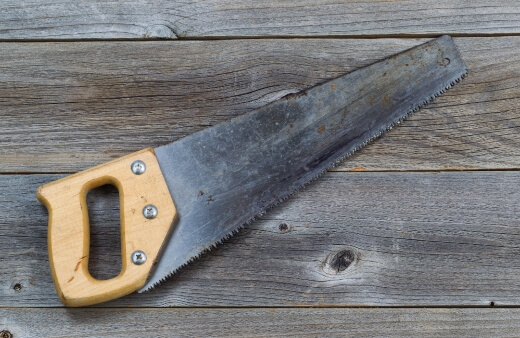
A hand saw, as opposed to a power saw, is often made to be a traditional manual saw that can be used with one hand. There are many types of hand saws depending on what your task is. They are small and lightweight, making them easy to maneuver and control.
Hand saws are ideal for cutting small pieces of wood, such as dowels, molding, and trim. They're also useful for making quick, rough cuts in larger wood chunks. Additionally, these are particularly helpful for making cuts on delicate materials or in small areas.
Where pruning hand saws are ideal for in the garden when cutting back your trees and shrubs.
When using a hand saw, it is essential to use a sawing motion instead of a chopping motion. The saw won't become trapped in the wood due to this.
7. Jigsaws
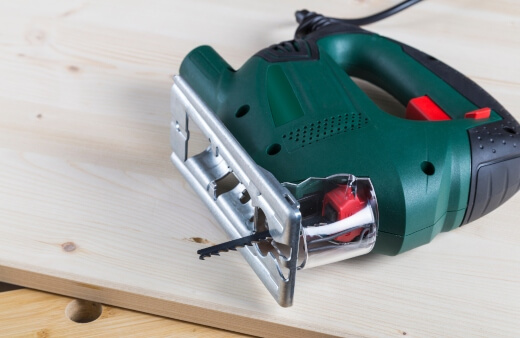
A jigsaw is a power saw that employs a reciprocating blade to cut curves and irregular forms in wood, metal, or other materials. Additionally, jigsaws can be used to make clean, straight cuts in wood - something that can be difficult to do with other power tools.
Another reason to use a jigsaw is for its versatility. Jigsaws can be equipped with various blades, each of which is made for a particular material or cut. You can use your jigsaw for many projects, from cutting through thick metal to making delicate cuts in thin plastic.
Finally, jigsaws are relatively inexpensive compared to other power tools. This makes them an excellent option for anyone who is just getting started with woodworking or doesn't have a large budget for tools.
8. Chainsaws
.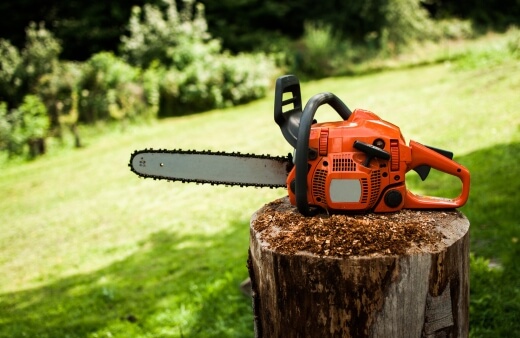
Chainsaws are probably the most popular among the types of power saws. They come in petrol powered chainsaws and electric powered chainsaws, which are mainly battery powered chainsaws.
It can be an excellent tool for gardening, provided you know how to use it safely and effectively. There are mainly great brands of chainsaws, one of my favourites is the Stihl chainsaw.
Here are some of the benefits of using a chainsaw for gardening:
Chainsaws can help you quickly and easily remove large branches or trees that are in your way. Mini chainsaws can also be used to trim hedges and shrubs. If you have a lot of leaves and debris to clear, a chainsaw can quickly work on the job.
You may also use a chainsaw to create mulch for your garden beds. Simply run the branches and leaves through the saw, and then spread the mulch around your plants.
Furthermore, chainsaws can clear a path through a thick brush. This can come in handy if you need to access or clearing an overgrown area of your property. Chainsaws come with their own safety gear, as they can be dangerous and messy. Make sure you wear a pair of jeans or chainsaw chaps and always where a pair of work boots.
9. Band Saws

One of the most popular uses for the band saw is resawing, which is cutting lumber into thinner boards. This is especially useful for creating thinner stock for veneering or other delicate woodworking applications.
The band saw can also be used to cut curves and other complex shapes, making it an ideal tool for crafting furniture or architectural millwork. In addition to woodworking, a band saw can work for metalworking tasks such as cutting pipes or shapes out of sheet metal.
The blades on a band saw are designed to resist heat build-up, so they can quickly handle heavy-duty metals without dulling. This makes the band saw an indispensable tool in any metal shop.
Whether you're a weekend warrior or a professional craftsman, the band saw is a tool that you should have in your arsenal. With its versatility and power, the band saw can help you tackle projects big and small, making it one of the most valuable tools in your shop.
Summing Up the Types of Saws
Saws are significant working equipment that can be useful and hazardous at the same time if used carelessly. Therefore, we must be careful enough to select the proper saw for the right jobs.
This article outlines nine different types of saws and their uses, making things clear about how each style of saw has a variety of functions. So, research well and select a saw carefully that you can utilize at its best for your woodworking job.
Now that you know the many types of saws and their uses, selecting the appropriate saw will be simple.
Published on October 22, 2022 by Gary Clarke
Last Updated on September 20, 2025




